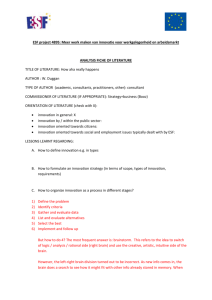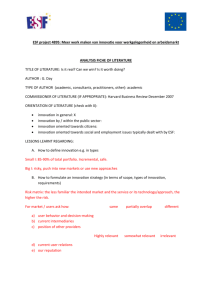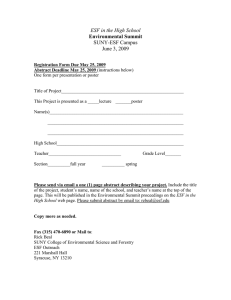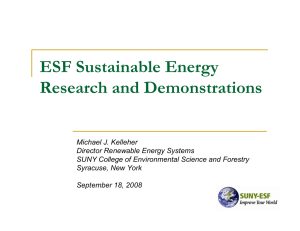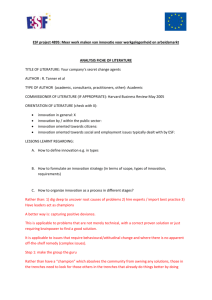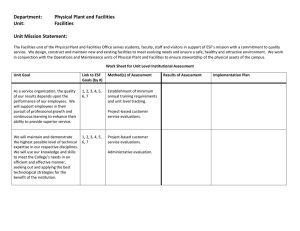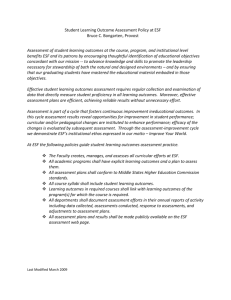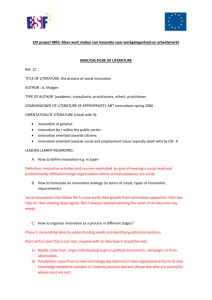ESF project 4895: Meer werk maken van innovatie voor
advertisement
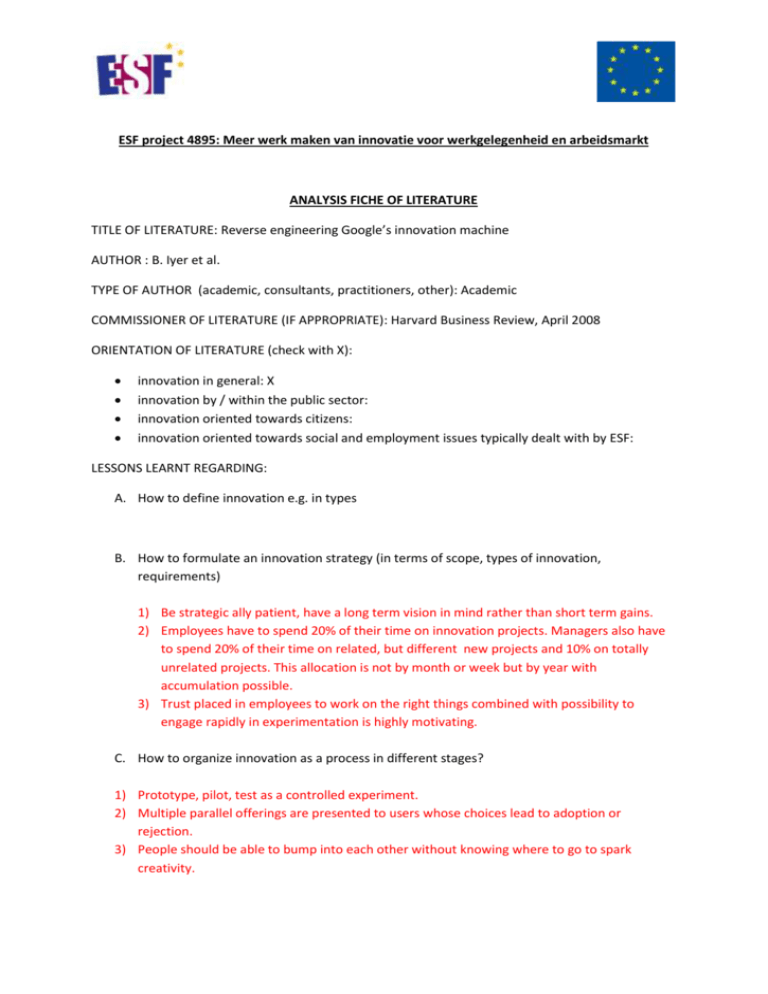
ESF project 4895: Meer werk maken van innovatie voor werkgelegenheid en arbeidsmarkt ANALYSIS FICHE OF LITERATURE TITLE OF LITERATURE: Reverse engineering Google’s innovation machine AUTHOR : B. Iyer et al. TYPE OF AUTHOR (academic, consultants, practitioners, other): Academic COMMISSIONER OF LITERATURE (IF APPROPRIATE): Harvard Business Review, April 2008 ORIENTATION OF LITERATURE (check with X): innovation in general: X innovation by / within the public sector: innovation oriented towards citizens: innovation oriented towards social and employment issues typically dealt with by ESF: LESSONS LEARNT REGARDING: A. How to define innovation e.g. in types B. How to formulate an innovation strategy (in terms of scope, types of innovation, requirements) 1) Be strategic ally patient, have a long term vision in mind rather than short term gains. 2) Employees have to spend 20% of their time on innovation projects. Managers also have to spend 20% of their time on related, but different new projects and 10% on totally unrelated projects. This allocation is not by month or week but by year with accumulation possible. 3) Trust placed in employees to work on the right things combined with possibility to engage rapidly in experimentation is highly motivating. C. How to organize innovation as a process in different stages? 1) Prototype, pilot, test as a controlled experiment. 2) Multiple parallel offerings are presented to users whose choices lead to adoption or rejection. 3) People should be able to bump into each other without knowing where to go to spark creativity. 4) How to define outputs of innovation e.g. in terms of idea, concept, prototype…? 5) How to make decisions regarding progress of an innovation? 1) If you fail, you should fail fast, so that you can try again. 2) Be analytical, data focused. 6) What roles exist for different actors in the innovation process? What competences are required for these roles? Leaders should assess staff on their contributions to stimulate innovation eg. how often they organized a “tech talk” (see below). They should also make sure there are lots of opportunities to meet and talk to people with other perspectives. 7) How to organize interaction with external stakeholders (open innovation)? 1) Testing and marketing with users blends into one. Users become essential members of the development team. 2) Allow others to come up with complementary services and link them to you own core service. 3) Capture the information related to all users, whatever service they access, including on its usefulness. 4) Organise intellectually stimulating “tech talks “with global experts, researchers. 8) Specific tools that are explained (list briefly for each tool in what stage, by which role, why, how it is to be used). a) Tool 1: The internet is used for randomized experiments (eg multiple versions of a webpage and then see who clicks more). b) Tool 2: Prediction markets are used to assess user demand for new services (eg ask 300 people a specific question regarding the future) c) Tool 3: online idea box where all staff can comment on and rate the idea.
